Hair transplantation: indications, contraindications and methods of operation
Many people are interested in hair transplantation, because baldness is one of the aesthetic defects that can occur suddenly and at any age. To solve this problem with the help of transplantation of skin with hair follicles began in 1 half of the last century. The transplanted hair looked unnatural, dolls due to the fact that the area of the skin flap was large. In addition, the operation was difficult, with many side effects and difficult to tolerate patients. Modern hair transplantation is the naturalness of the scalp and minimal painfulness of the procedure.
The essence of the procedure is the redistribution of hair from the places where they grow thickly to baldness sites. The surgeon returning the second youthful hair should have the highest level of professionalism. Someone's hair grows to the right, someone's left, and on the top of the head they whirl. His task is to implant hair in such a way that they are no different from those that remain.
Speaking of donor hair, it should be understood autotransplantation, that is, transplanting your own hair follicles, since the hair of another person gets acclimatized poorly. Donor material is taken from the area of the scalp. Very rarely, hairs taken from other parts of the body are used, since after transplantation they do not change their structure, that is, they remain short, curly, of a different color, etc.
Pathological hair loss by medical language is called alopecia. An important condition for successful hair transplantation is to identify the causes of baldness. Depending on the nature of alopecia, in one case the results of the operation will be excellent and will last for many years, in the other - all the efforts of the surgeon will be in vain.
In women and men, the causes of this aesthetic defect are different. Representatives of the stronger sex are more likely to face the problem of hair loss, but, unlike women, transplantation helps them most of all. In children, baldness is rare and the possibility of transplantation is discussed in each individual case.
Alopecia has a different nature:
- Androgenic. Peculiar to men, but can occur in women. The cause of hair loss are the male hormones, which negatively affect the hair follicles, as a result of which they atrophy.
- Scar. In this case, the hair stops growing in the place of the head where there is scar tissue.
- Traction. Alopecia occurs as a result of mechanical damage to the hair follicles, for example, with strong tension in some hairstyles.
Alopecia in men
Male and type baldness is the most common. It occurs in the area of the forehead and crown. It is in this area that hair that is exposed to androgens grows. Testosterone is able to inhibit the hair follicles, and hair becomes thin. At the same time, at the time of the hair change, the follicle does not have time to give a new sprout and dies. The hair on the temples and the back of the head are not harmonious, therefore, alopecia in men looks like a crown. In this case, baldness can begin at any time after puberty, and the sooner this happens, the faster the hair will fall out.
The quality of hair care does not affect androgenic alopecia. Its causes are other factors, namely:
- Hereditary predisposition The chance of parting with hair increases in men, in the genus of which there are those who are bald early.
- Hormonal imbalance. Hair bulbs will surely die off if the testosterone level is too high.
The clinical experience of hair transplantation shows that transplanted neandrogen-dependent hair from the back of the head and temples to the crown and forehead retain their structure and are not affected by hormones. Thus, a new hairline has no significant risks to damage. But it should be borne in mind that the remaining hair may fall out.
Female baldness
Transplantation of hair follicles to treat alopecia in women is rarely used. This is due to the fact that it is very difficult to establish the exact cause of hair loss. The factors affecting the pathology, mass:
- tight diets;
- stress;
- hormonal disruptions;
- taking certain medications;
- blood diseases, etc.
If you do not identify the cause of baldness of a woman and transplant hair, they will fall out, like the rest. Therefore, for the surgeon, the indication for transplantation becomes hair loss by the male type, on the forehead and the crown. If a woman loses her hair all over her head, then the doctor will most likely refuse to do the surgery.
For what reasons the surgeon will not do the surgery:
- focal alopecia, in which it is impossible to predict where and in what volume the hair will fall out;
- prolonged hair loss for unknown reasons;
- no hair left for transplantation (severe baldness, including the occipital region);
- the rapid development of androgenic alopecia (you need to undergo treatment before transplantation);
- inflammatory and other diseases of the scalp;
- Contraindications for health reasons: diabetes mellitus, chronic diseases in the acute stage, etc.
Types of hair transplantation
Preparing for hair transplantation
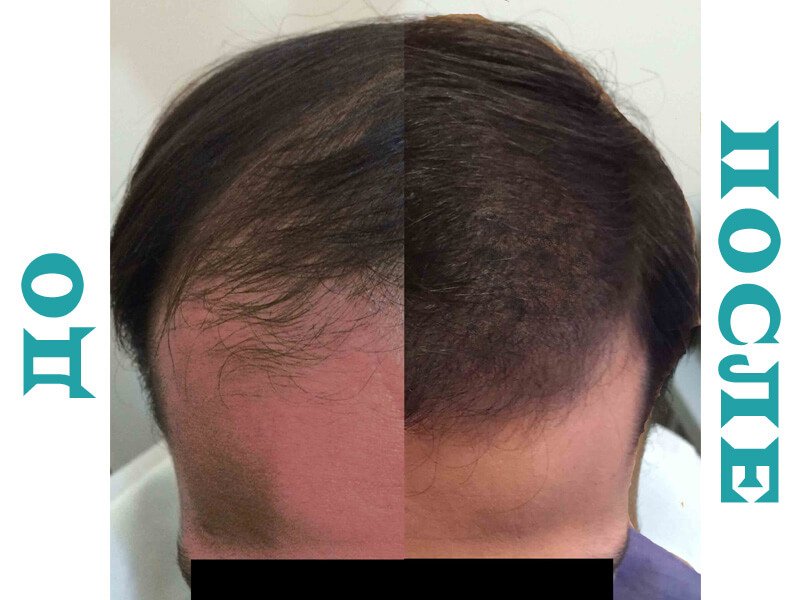 If all contraindications are excluded, then the patient should be thoroughly prepared for the operation. At the consultation, the surgeon will tell about the features of transplantation, the behavior of hair after transplantation and how to avoid complications. At this meeting, a new hairline is modeled, and the technique of operation is determined. For example, it is better to transplant one hair on the forehead area (follicular transplantation), on the back of the head - in groups of
If all contraindications are excluded, then the patient should be thoroughly prepared for the operation. At the consultation, the surgeon will tell about the features of transplantation, the behavior of hair after transplantation and how to avoid complications. At this meeting, a new hairline is modeled, and the technique of operation is determined. For example, it is better to transplant one hair on the forehead area (follicular transplantation), on the back of the head - in groups of
There are several methods of hair transplantation:
- Strip method It is also called operational, patchwork or FUT. A feature of the method is to cut a flap of skin from the back of the head and divide it into grafts. Further groups of follicles are implanted in the desired areas of the head.
- Non-surgical or FUE method. The operation is performed without cutting the skin. With the help of special tools, grafts are removed from the back of the head and transplanted to the bald part of the head.
- HFE method. It is a modern type of seamless surgery, but it differs in the way of hair implantation.
After examining the patient’s general health and hair condition, the doctor determines the optimal method of transplantation. The following indicators are taken into account:
- hair density in the donor area;
- vastness of alopecia;
- skin elasticity;
- relative contraindications;
- financial capabilities of the patient.
The duration of the operation depends on the chosen method. Graft transplants of
Before surgery, the patient should observe a number of conditions:
- donate blood for laboratory tests;
- Undergo fluorographic examination;
- to undergo treatment for progressive androgenic alopecia;
- cure other diseases of the scalp;
- 2 weeks to stop taking medications for the treatment of baldness and other medicines that thin the blood;
- 1 week before transplantation you need to quit smoking and stop drinking alcohol;
- on the day of surgery or on the eve of short hair cut
(1-2 mm), except for the transplantation of long hair.
Course of operation
Hair transplantation is performed on an outpatient basis under local anesthesia. In one day, the doctor can transplant hairs within
Rehabilitation period
Puffiness of tissues and other unpleasant phenomena occur on the third, fourth day after the procedure. The scalp hurts, itches, bruises appear on it. As a rule, all ailments disappear in 10 days. Special care for new hair is not required. Places of implantation of hairs should be wiped with special means recommended by the doctor for the rapid healing of tissues and the convergence of crusts. You can wash your hair and use familiar cosmetics after
How much does hair transplant cost?
The price for 1 graft in Moscow and St. Petersburg starts from 80 rubles, the average is around 110 rubles. Many clinics reduce the price, depending on the volume of the operation - the more hairs transplant, the lower the price. Typically, patients fit in the price of
Hair transplantation is carried out in other areas:
- eyelashes - about 12,000 rubles;
- mustache - from 50,000 rubles;
- beard - from 50,000 rubles;
- eyebrows - from 17,000 rubles.
Each hair transplant technique has its advantages and disadvantages. Any method deserves attention and requires separate discussion. Consider them in more detail.
The operation of hair transplant strip method FUT
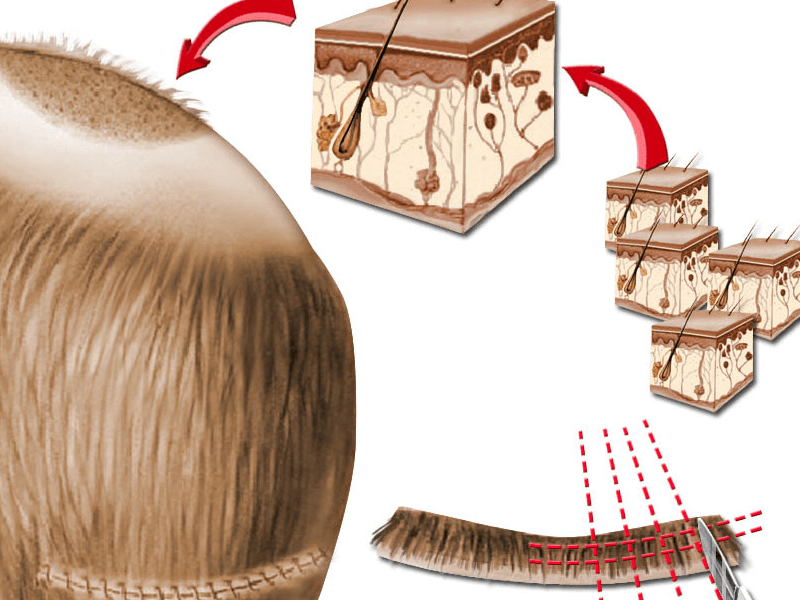 The operation is called Strip, which means a strip.
The operation is called Strip, which means a strip.
Cutting a thin rectangle of skin in the back of the head characterizes the essence of this method.
The skin flap is easily divided into grafts and introduced into new wells.
After surgery, a long scar remains in the donor area.
Stages of transplantation:
- The doctor treats the occipital part of the patient's head with an antiseptic and cuts a rectangle with a scalpel according to a previously made marking, usually it is 25 cm in length and 1.5 cm in width.
- The surgeon separates the skin flap from the head. This work must be very neat, as if you carelessly move you can damage the hair follicles.
- At the next stage, it tightens the edges of the wound and stitches.
- While the surgeon deals with the patient's wound, the medical team begins to divide the flap into grafts. This takes into account the right amount of hairs in a separate follicular junction. All grafts are thoroughly checked for the absence of damaged bulbs.
- The surgeon forms on the skin where you want to implant hair, channels. Microsurgical tweezers implant grafts, one by one, to a new location.
After the procedure, the patient can go home. No special dressings are required. Postoperative care is to lubricate the surgical sites with special lotions designed for quick healing of injured skin.
The hair graft surgery has an important advantage over other transplantation techniques, namely, fast work on large baldness sites. This is due to the fact that the hair follicles are not extracted one by one, but in large quantities.
Disadvantages of the operation:
- the possibility of infection of tissues when cutting out a skin flap;
- numbness of the scalp due to trauma to the nerve endings with a wide cut;
- scarring of the skin on the back of the head.
Another disadvantage of FUT hair transplant surgery is a low aesthetic effect. Since in this case only up to 50 hair bulbs per 1 square centimeter can be placed in the alopecia zone, at a rate of 100 units. In addition, this method does not allow you to adjust the angle of hair growth, which is important for imparting naturalness of hair.
Hair transplantation
FUE seamless hair plastic
 The technique of hair transplantation, unlike the previous method, does not involve cutting out a skin flap from the donor area. But the implantation of hair follicles is carried out in the same way, through cuts.
The technique of hair transplantation, unlike the previous method, does not involve cutting out a skin flap from the donor area. But the implantation of hair follicles is carried out in the same way, through cuts.
A special tool is used to collect follicles from the occipital and temporal areas - punch. Depending on the diameter of the punch (from 0.5 to 5 mm), the resulting grafts are either implanted immediately or are divided into additional grafts.
The course of the operation differs from the patchwork method only in the first part, namely, the collection of hair follicles. Next, the implantation of grafts is done in a staggered manner, into the channels that the doctor forms with a scalpel or other special tools.
FUE hair plastics has the following advantages:
- no postoperative scar;
- there is no probability of wound suppuration and scarring of tissues;
- transplantation and rehabilitation period are easier.
Disadvantages of the method:
- there is a pronounced swelling in the postoperative period;
- It is impossible to change the angle of inclination of the implanted grafts.
Hair implantation with HFE
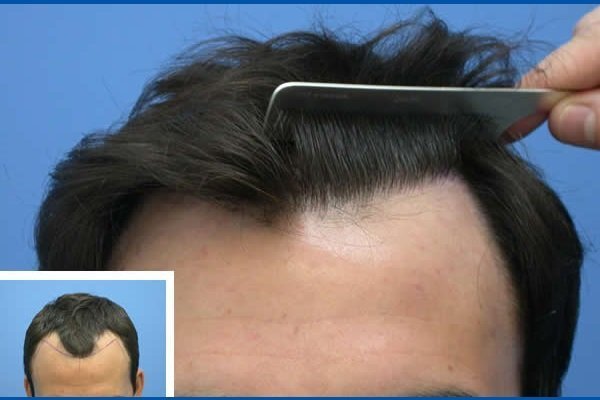 The HFE technique is the most progressive to date. The doctor performs all the manipulations exclusively with a punch, or more precisely, a micropunch, since its diameter does not exceed 0.9 mm Thus, the patient's skin is not exposed to even minimal incisions.
The HFE technique is the most progressive to date. The doctor performs all the manipulations exclusively with a punch, or more precisely, a micropunch, since its diameter does not exceed 0.9 mm Thus, the patient's skin is not exposed to even minimal incisions.
The course of the operation:
- The surgeon removes the hair follicles with a thin tube and a magnifying optical device. The doctor has the opportunity to see the most healthy hair, as well as choose the wells, which contain a certain number of hairs.
- The medical staff, after the transplant doctor picks up the doctor, carefully examines the follicles for integrity and sorts according to the amount of hair: 1, 2, 3 and 4 each.
- The surgeon introduces hair follicles to new places using the same micropanche. The method allows you to change the angle of inclination of the hair.
Advantages of transplantation using the HFE method:
- new hair grows in the same direction as the rest;
- up to 80 transplants per sq. cm can be inserted;
- easy distribution by the number of hairs in the hole allows to achieve the maximum aesthetic effect;
- tissues are not injured, respectively, there are no side effects associated with wounds;
- surgery is easily tolerated by patients.
Thus, the implantation of the hair by the HFE method makes the hair thick and with a natural slope of hair growth. The main goal of transplantation is the maximum approximation to naturalness, achieved in this technology.
The disadvantage of hair transplantation by this method is not profitability of work with significant baldness. Since the operation in this case will take too much time and will be very expensive.
How to treat baldness: medical, cosmetic and folk remedies
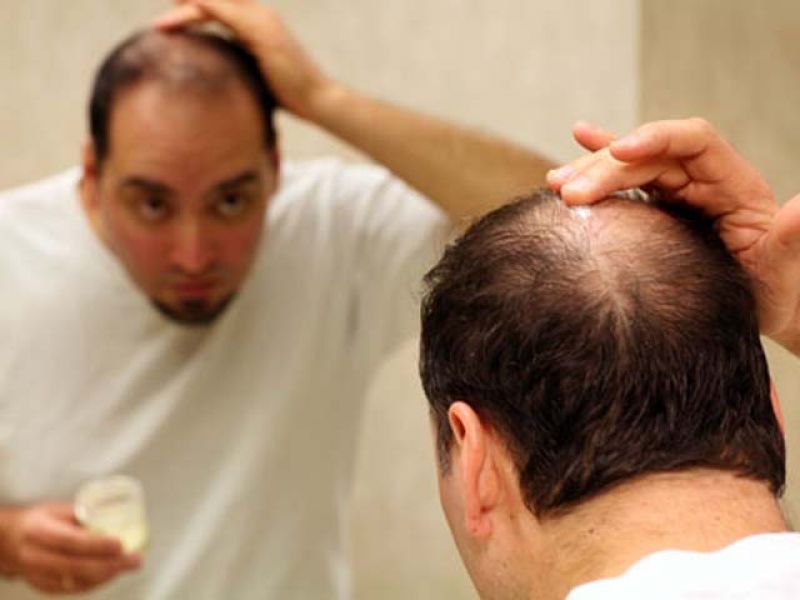 At the initial stage of alopecia, when hair loss does not become rampant, you can try to stop this process with conservative treatment methods. To do this, you should visit the trichologist, who will prescribe a drug treatment. For example, androgenic alopecia is treated by such means as Finasteride or Minoxidil. At the same time, one should tune in to long-term treatment, since the first signs of improvement come after the systematic use of funds for 4 months or more. In cases of active baldness or hereditary predisposition, you should not rely heavily on the positive effect of therapy.
At the initial stage of alopecia, when hair loss does not become rampant, you can try to stop this process with conservative treatment methods. To do this, you should visit the trichologist, who will prescribe a drug treatment. For example, androgenic alopecia is treated by such means as Finasteride or Minoxidil. At the same time, one should tune in to long-term treatment, since the first signs of improvement come after the systematic use of funds for 4 months or more. In cases of active baldness or hereditary predisposition, you should not rely heavily on the positive effect of therapy.
If the hair has become thin, then it can be perceived as baldness. In fact, this situation is fixable. This will help coraplasty hair - a procedure aimed at saturation of curls with keratin. Specially designed cosmetics are easy to use at home. Hair becomes thicker and silky. Inoar, a keratin hair straightener, is well suited for smoothing unruly curls.
On the forums on the Internet you can find a lot of tips on how to treat baldness at home. Folk recipes include various infusions and decoctions of herbs, roots, which need to wash your hair or rub into the skin. But all of them are most often aimed at improving the condition of hair and are unlikely to help in the case of androgenic alopecia.
In order to strengthen hair, both traditional and traditional medicine recommend eating foods rich in vitamins and minerals, changing lifestyles: giving up bad habits, relaxing fully, and so on.
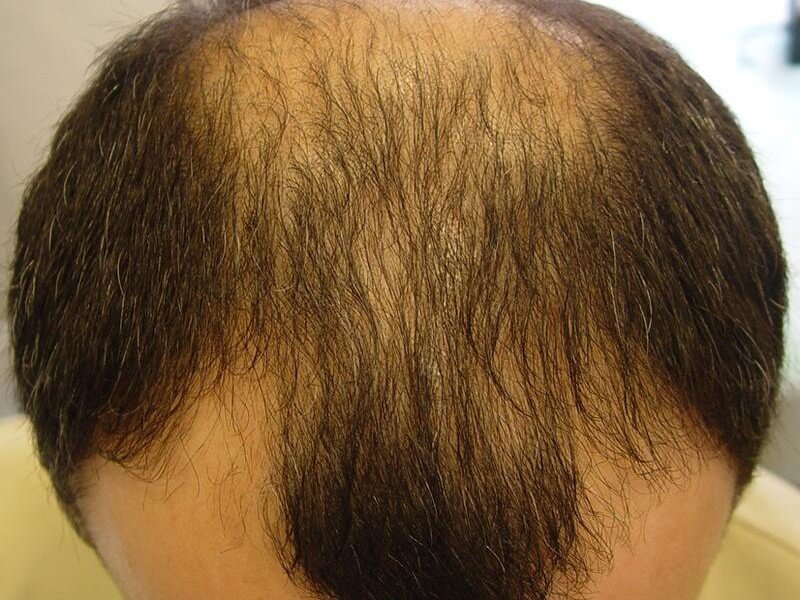
Zaxap 07/26/2016 9:27:18
Good day.
Great article. Found answers to many questions of interest. Very interested in non-invasive hair implantation methods.